
Flood and Dry Weather --Vol.3--
Large Flood
It was 14th June. It had been raining since the previous midnight and was still raining heavily. There was no need to see the river. I knew that my chance to fish Gaulfossen disappeared like a bubble. Then the rain eased off about noon although it did not seem to stop so soon. Actually, it stopped raining at night but I was in no mood to check how heavily and to what extent it had rained. What will happen with the river? Well, not only Gaulfossen but also the next week fishing was threatened.
The River Gaula turned into a dreadful channel. The hut on the Bridge Pool was finally flooded.
On 15th the weather remarkably improved. There was fresh air around. After breakfast Mary Anne and I hurried to check the river. Sokna, a tributary of the River Gaula, rose more. It was what I had expected. Nevertheless, we lost our words and just screamed when we saw the mainstream of the Gauna. It looked like a different river. There was nothing left of the River Gaula as it usually looks.
The scenery of Bridge Pool was more peculiar. A huge channel was running throughout a cloud of spray raised from the valley. It could not be called a river. It looked as if the mountains had been directly draining a huge amount of water. Only standing on the bridge to see the river made us feel terrified. The water reached just under the bridge. Usually we look down at Bridge Pool from a small hut on the embankment but now a lower half of the hut was under water.

The water was more raging as we went upstream.
Overwhelmed by the tremendous energy of the flood, we were riveted there for a while. But curiosity was stronger than fear. Thinking that we could not miss a chance in a million to watch such a large flood, we headed further upstream.
The further we went upstream, the wilder nature we saw. Not only the banks but also the embankments completely disappeared. Brown water covered the whole valley and madly burst out running. Although the rain had stopped several hours before, the water was pouring down like a fall on the riverside road from the precipice. We felt as if we had been driving in the river. At the fish-stop-waterfall that we had visited several times, dirty water was swirling at top speed as if it had split up the mountain. It was like the source of the River Amazon in the rainy season. All we could do was to take photos of the ghastly sight.

Countless trees and logs were flowing down in muddy water.
The next day the fine weather suddenly ended. It was drizzling from the morning. But the water did not seem to rise any more. In the afternoon we went to the riverside with the TV staff who wanted to interview us. We were standing on the left bank to see New Pool of NFC in front. Large trees and logs sometimes passed, bobbing up and down in muddy water.
When we were interviewed on the embankment I unexpectedly screamed. There is a current called Tilseth on the opposite bank upstream, whose shape was entirely changed by high water in 1995. Now the embankment facing Tilseth began to fall down in front of us! Then the sharply curved embankment and the meadow spreading on it disappeared together. It took only 5 minutes.
It turned out later that the flood was the largest since 1944 and the water amount of the Gaula reached 1972t per second. The scenery was reported on Ken Sawada Fly Fishing Video Show vol.6. No matter how many times I saw the scenery I could not believe my eyes.

From the night on 16th the water level started falling. It was still a large flood but somehow there was no more worry about disaster. On 17th we went downstream to see the river condition. Whereas the water dramatically rises upstream at high water due to narrow width of the river, it does not rise so much downstream. Therefore, there might be a slight chance of fishing downstream, even if no catch.
We had another reason for entirely giving up fishing upstream. Even if there had been a spot available, there must have been no salmon up Gaulfossen that year. For when salmon started coming upstream in May, a large amount of cold water flowed into Gaulfossen and it was closed to salmon.

A fish-stop-waterfall 60km up from Storen. Usually it flows down as a beautiful raging waterfall.

A normal scene of the source of the River Gaula at midsummer. It looks as if even char were caught. The River Gaula now seen from the same bridge.

Another normal beautiful scene of the source of the River Gaula. The River Gaula now.
Lower Gaula Beat
It was true that fishing downstream was slightly more hopeful but we were only allowed to fish the beat in Lundamo, which newly joined NFC from that year. I wondered whether we could fish such high water but there was no other beat available. We headed there, thinking that we would be satisfied with a glance of the river.It was a week before that we first saw the new beat called Lower Gaula beat. At that time we saw the left bank just to find that fishing was impossible. The water level was much higher now. Therefore, only the right bank left us a chance. We headed for the right bank with a map in our hand.
At the edge of the town Lundamo we made a turn from the national road and went down the embankments into a large meadow. High water changed the road into the mud like a swamp. I drove ahead, worrying about our way back. A fox dashed from the sideways grass and jumped away through the large field like a butterfly.
We managed to drive past a large puddle and finally arrived in front of the beat.
It sometimes rained lightly, as usual in June. We walked through a clump of trees to the riverside. We did not wear any rain outfit because we had not got a slightest idea of fishing. The river condition was what I had expected. The whole riverside was overflowed with the water. It was clear that I could not fish down along the bank downstream from my standing point. I looked for a big rock just upstream, which showed the beat border. We searched around with the help of a map and found it in the water.

New Pool was swollen. Now 5 years later, big trees and logs that came drifting still remain on the bank.
Lundasokna
While I was searching that rock, I found one thing. Water flowing underfoot was unexpectedly transparent. What made it so, whereas the large current overflowing in front of us was ochre and muddy as far as we could see?When I looked around upstream, I solved my question. We had passed across a small river at the edge of Lundamo before. It is a tributary named Lundasokna. As there is a dam upstream, Lundasokna is never muddy even at high water. It flowed into the right bank of the River Gaula 300m up here. That was why clear water flowed in a belt along the right bank downstream from the junction.
When I found that I slightly hoped for a fishing chance. If there were a fish in such terrible muddy water it would definitely come and stay in that clear water along the bank. It was very doubtful whether a salmon was staying in such a stream as the River Amazon, but if there is, it must be here. Although possible fishing spot was only several ten metres long, I thought it was worth trying.
When I looked around at the junction of Lundasokna further upstream again I saw an angler at the beat upstream. I could not believe my eyes. Is he a fool or a madman to fish in such a river? But surely, that angler was walking to the waterside with the rod on his shoulder.

The embankment of Tilseth we could see at the opposite bank drifted away within 5 minutes.
I was thinking about that unbelievable scene. Since he came to the River Gaula in that season he surely had many years’ experience of fishing the River Gaula. Probably he knew everything about the beat. It was such an expert who was going to start fishing. It was clear that he knew there was some possibility of catching salmon.
I looked at the current in front of me again. Clear water was flowing as long as 30m from the bank side. Perhaps it was my imagination, but the current seems much clearer than a few minutes before.
I dashed back to the car and immediately prepared myself for fishing. 10 days had passed since we arrived in Norway. Finally I had a chance to walk into the river for fishing. Taking my 17ft rod from the bag and setting my cherry salmon reel to it, I felt excited like an angler on the opening day's morning. How long we had kept waiting!
-- To be continued --
- NET SHOP INFORMATION
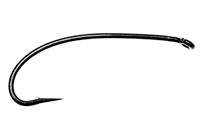
SL6 Black Spey Hooks
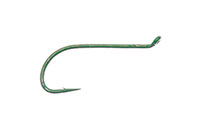
DU3 Limerick Spinner Hooks
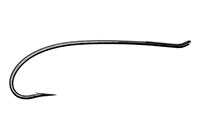
SL4 Single Bartleet Hooks
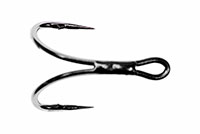
XD1 Tube Fly Double Hooks
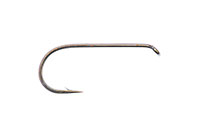
DD2 Flat Perfect Hooks
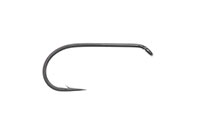
DD1 Black Terrestrial Hooks
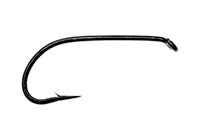
TD4 Old Limerick Wet Hooks
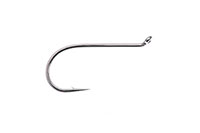
DU1 Silver May Hooks
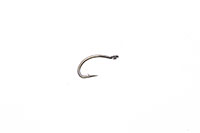
MU1 Flat Midge Hooks
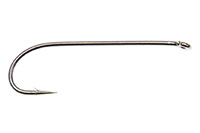
LD3 Long Limerick Hooks
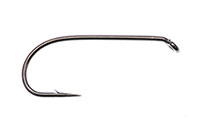
TD2 Summer Sproat Hooks
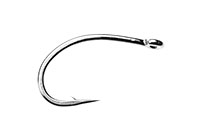
XS1 Tube Single Silver Hooks
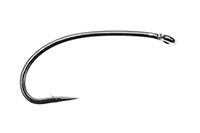
TD6 Siver Sedge Hooks

SL5 Black Spey Hooks

DU3 Limerick Spinner Hooks
- TROPHY CLUB
- FLY SHOW
- EXHIBITION
- MASTERS`
- FLY DRESSING CONTEST Archives
- TRAVELLER Archives
- TACKLE IMPRESSIONS Archives
- ANGLERS` PHOTO GALLERY Archives
- ----------------------------------------------
- トロフィークラブ
- フライショー
- エキシビション
- マスターズ
- フライドレッシング・コンテスト・アーカイヴ
- トラヴェラー・アーカイヴ
- タックル・インプレッション・アーカイヴ
- アングラーズ・フォトギャラリー・アーカイヴ
株式会社サワダ 185-0021 東京都国分寺市南町3-13-4
SAWADA'S INC. 3-13-4 Minamicho, Kokubunji, Tokyo 185-0021, Japan
写真・ドキュメントの無断転載を禁じます。
All the images and documents found on this site are owned by Ken Sawada and may not be used without permission.
But, link to this site is FREE.
Copyright © 2000 - 2024 SAWADA'S INC.. All rights reserved.
SAWADA'S INC. 3-13-4 Minamicho, Kokubunji, Tokyo 185-0021, Japan
写真・ドキュメントの無断転載を禁じます。
All the images and documents found on this site are owned by Ken Sawada and may not be used without permission.
But, link to this site is FREE.
Copyright © 2000 - 2024 SAWADA'S INC.. All rights reserved.
